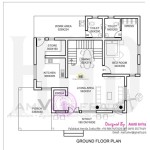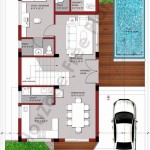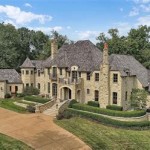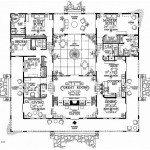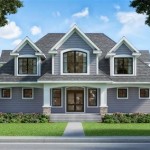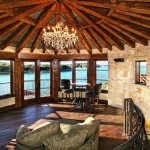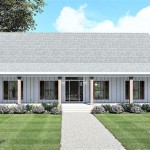1910 House Plans: A Glimpse into Architectural History
The year 1910 falls within a fascinating transitional period in American residential architecture. The elaborate ornamentation of the Victorian era was waning, giving way to the more simplified forms of the Arts & Crafts and Prairie School movements. Examining 1910 house plans provides a unique window into this shift in aesthetic preferences and the evolving needs of homeowners at the turn of the 20th century.
Common Features of 1910 House Plans
Homes built around 1910 often share several key characteristics that distinguish them from earlier and later styles. These features reflect the changing social landscape and advancements in building technology of the time.
One defining feature is the emphasis on functionality. Floor plans became more open and less compartmentalized than the Victorian era's warren of small rooms. This reflected a growing desire for spaces that facilitated family interaction and entertaining.
Front porches were prominent architectural elements, serving as important social spaces for homeowners and their neighbors. These porches often featured wide steps, comfortable seating, and decorative details that contributed to the home's curb appeal.
Built-in cabinetry and other practical storage solutions became increasingly common in 1910 house plans. This trend reflected the growing availability of manufactured building materials and a desire for more efficient use of space.
Popular Architectural Styles in 1910
Several distinct architectural styles were prevalent in 1910, offering homeowners diverse options to suit their individual tastes and budgets. These styles often blended elements from different influences, creating a rich tapestry of architectural design.
The Arts & Crafts movement emphasized handcrafted details, natural materials, and simple, functional forms. 1910 Arts & Crafts homes often featured exposed beams, low-pitched roofs, and built-in furniture, showcasing the beauty of craftsmanship.
The Prairie School style, championed by architects like Frank Lloyd Wright, featured horizontal lines, open floor plans, and a strong connection to the surrounding landscape. These homes were designed to blend seamlessly with their environment, often incorporating natural materials and large windows to maximize natural light.
The Foursquare, a practical and economical style, gained popularity in 1910. These homes featured a simple, boxy design with four rooms on each of two floors, maximizing space utilization on a smaller footprint.
The American Craftsman style, a subset of the Arts & Crafts movement, was also prevalent. This style showcased handcrafted details, natural materials, and an emphasis on simplicity and functionality.
Adapting 1910 House Plans for Modern Living
Original 1910 house plans can be adapted to suit the needs of modern homeowners while preserving the historical character of the design. Careful consideration of modern building codes and lifestyle preferences is crucial in this process.
Modern kitchens and bathrooms can be seamlessly integrated into 1910 house plans, providing updated amenities while respecting the original architectural style. This often involves careful selection of fixtures and finishes that complement the historic character of the home.
Energy efficiency can be significantly improved in 1910 homes through the addition of insulation, updated windows, and other energy-saving measures. These upgrades can help lower utility costs while maintaining the home's historic integrity.
Finding and Utilizing 1910 House Plans
Numerous resources exist for individuals interested in exploring and utilizing 1910 house plans. Historical societies, architectural archives, and online databases offer a wealth of information and original blueprints.
When working with 1910 house plans, it's essential to consult with qualified professionals, including architects, engineers, and contractors. These experts can ensure that the plans meet modern building codes and are structurally sound.
The Enduring Appeal of 1910 House Plans
The continued interest in 1910 house plans speaks to the enduring appeal of these homes. Their architectural character, craftsmanship, and reflection of a pivotal moment in American history continue to resonate with homeowners today.
Considerations for Building with 1910 House Plans
Building a new home based on 1910 house plans requires careful consideration of several factors. Understanding the complexities of historical construction techniques and material availability is vital for a successful project.
Replicating the craftsmanship found in 1910 homes often requires skilled artisans and specialized materials. Sourcing these materials and finding craftspeople with the appropriate expertise can be a crucial aspect of the building process.

Standard Little Bungalow Henry Wilson 1910 Small House Plan Vintage Plans

Design No 121 Vintage House Plans Cottage Romantic

9 Vintage Cottage Home Plans From 1910 Americana

Henry L Wilson The Bungalow Book Homes Side Gable

A Refurbished 1910 Craftsman Style Cottage In Palm Beach Plus House Plans Jlj Back To Classic Jljbacktoclassic Com

1910 Early Eclectic English Tudor Design No 540 Story And A Half Bungalow Book Vintage House Plans Floor

Three Bedroom Cottage House Plan 1910

1910s House Plans By The Ready Built Company Side Gable Bungalow With A Pergola No 175

House Plan 2 Bedrooms 1 Bathrooms 1910 Bh1 Drummond Plans

Historic Plans Small Bungalow Harris Home No L 1003 Project House

